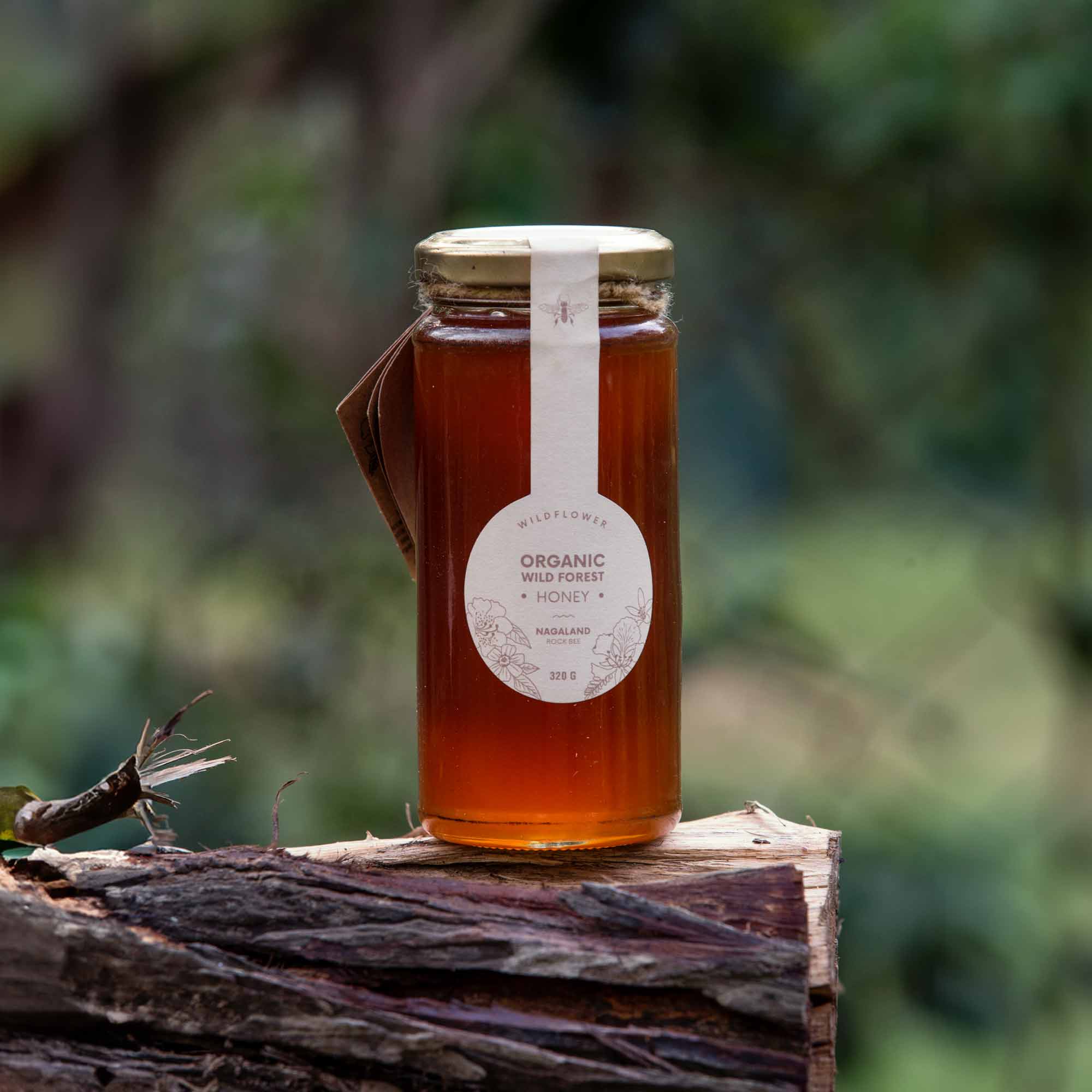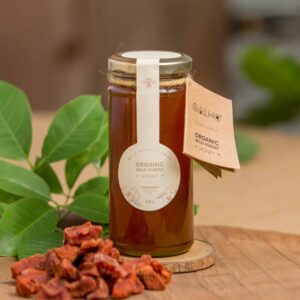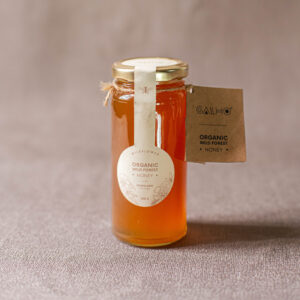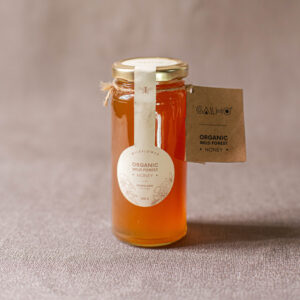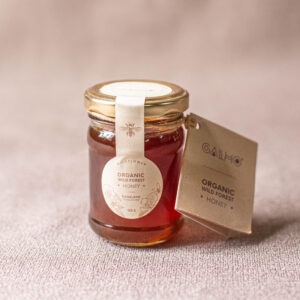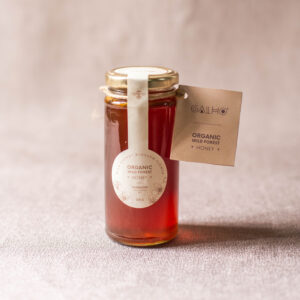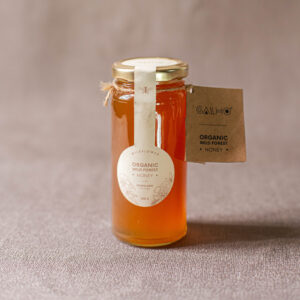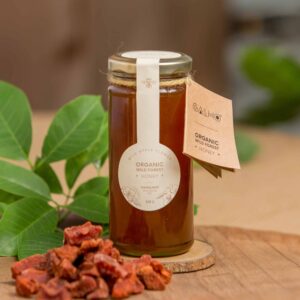Nagaland boasts incredible biodiversity due to its location in the pristine forests and rolling hills of the Eastern Himalayas. This region is a refuge for rare flora and fauna because it is part of one of the world’s 35 biodiversity hotspots. Among its numerous natural treasures, Nagaland honey is the true epitome of purity. Harvested from the unspoiled wilderness of Nagaland, this golden syrup is more than a sweet treat — it represents a commitment to tradition, sustainability, and the bond between indigenous communities and nature.
The Untamed Beauty of Nagaland
The region has lush forests and varied climatic zones. This creates an ideal habitat for countless wildflowers. The floral diversity and the presence of native bees lead to the production of pure honey.
The region’s designation as a biodiversity hotspot means it meets exacting ecological criteria:
- At least 1,500 vascular plant species must be endemic.
- Human activity alone has probably so far eliminated at least 70% of its original vegetation.
Nagaland, home to bountiful forests and rare wildlife, is a pearl in this fragile ecosystem. The honey collected in these forests is infused with the essence of the land and is unique in flavour as well as a reflection of Nagaland’s biodiversity.
The Essence of Wildflower Honey: Nature’s Sweetest Gift
Commercial honey can be diluted with sugar and produced by bees kept in specific areas. But this pure variety is produced from the nectar that free-foraging bees bring back from as many flower species as possible. The result is a honey rich in flavour and medicinal value.
Key Characteristics
- Flavour Complexity: It brings a taste that can vary with the season and type of flowers blooming. It can be floral and fruity or even earthy.
- Natural Colour and Texture Variations: The appearance can change over time because of different conditions. The colour can change. So can the viscosity and texture.
- High Nutritional and Medicinal Value: It is high in antioxidants and antibacterial properties. It helps prevent colds and supports digestion. It also promotes wound healing.
- Raw and Unprocessed: Unlike the industrially processed honey you might usually buy, wildflower honey from Nagaland is free from chemicals, preservatives and artificial flavouring.
Galho Wild Forest Honey: A Taste of Pure Wilderness
One of the best samples of wildflower honey from Nagaland is Galho Wild Forest Honey. The name itself has become synonymous with purity and genuineness. It is natural, raw, unpasteurised, and unprocessed, and hence all its nutrients and natural enzymes are intact.
What Makes Galho Honey Unique?
- Unaffected by Industrial Processing – The wild forest raw honey maintains its natural taste, texture, and medicinal benefits.
- Seasonal Differences – Based on nectar sources that are accessible to bees, the honey may vary in taste, color, and viscosity. This results in each jar of Galho honey being distinct.
- 100% Pure and Organic – Additives, chemicals, and artificial preservatives-free, Galho honey is nature’s gift from the wild forests of Nagaland.
- Nutrient-dense – Packed with antioxidants, vitamins, and minerals, Galho honey is not merely a sweetener but a superfood.
The product represents sustainable beekeeping methods alongside the environmental heritage of Nagaland state. Honey from Zeyakulene ensures its place on the essential list for individuals who want pure honey without any adulteration.
The Guardians of the Forest
The wild forest raw honey of the region is deeply connected to the indigenous tribal communities who have mastered the art of traditional beekeeping. Nagaland has 16 prominent tribes, each possessing its own tradition. Most of these tribes, including the Konyak, Ao, and Angami, have been maintaining sustainable beekeeping for centuries.
1. Traditional Honey Harvesting Techniques
The tribes motivate wild bee colonies to nest in bamboo houses, tree cavities, and hand-cut wooden hives. They collect honey only seasonally to maintain the populations of bees stable and healthy.
2. Deep Knowledge of Medicinal Plants
Native beekeepers know the special characteristics of wildflowers and plants, which enable them to recognize honey with curative properties. Honey produced from nectar sources like eucalyptus is renowned for its medicinal value.
3. Cultural and Spiritual Connection
The practice of collecting honey in the region often includes rituals and prayer because the local communities show deep respect for natural elements. The indigenous peoples in various tribes consider bees to be sacred beings because they believe bees help sustain natural equilibrium.
Why Nagaland’s Wildflower Honey is Exceptional
The sustainable harvesting of Naga honey especially Galho Wild Forest Honey creates a distinctive product with unadulterated purity and superior health advantages.
| Feature | Nagaland’s Wildflower Honey | Commercial Honey |
| Source | Wild forests | Monoculture farms |
| Processing | Raw and unpasteurised | Pasteurised and filtered, often mixed with sugar |
| Flavour Profile | Varies with season | Uniform and processed taste |
| Medicinal Value | High | Low |
| Sustainability | Supports local beekeepers | Often linked to bee population decline |
Global Demand for Ethical and Sustainable Honey
There is growing awareness among consumers of organic and ethical produce. This creates an increasing demand for raw and unprocessed honey. Consumers now look for honey that is:
- Free from artificial preservatives and sugar
- Harvested sustainably
- Abundant with natural enzymes and medicinal properties
With its genuineness, wholesome taste, and medicinal value, Galho Wild Forest Honey is emerging as an international delicacy. Embracing such ethically produced products is becoming mainstream. It allows customers to aid in the protection of Nagaland’s forests, bees, and traditional beekeeping practices.
Preserving Nagaland’s Honey Heritage: The Need for Sustainable Practices
In order to keep Nagaland’s wildflower honey pure for generations to come, we need to concentrate on the following:
- Sustainable Beekeeping – Supporting local beekeepers and encouraging environmentally friendly honey harvesting practices.
- Biodiversity Conservation – Preserving Nagaland’s forests from deforestation and destructive farming.
- Fair Trade Practices – Ensuring appropriate compensation for the work of the indigenous beekeepers.
Conclusion
Wildflower honey from Nagaland represents the biodiversity of the land. It honours the indigenous knowledge and sustainable practices of the communities. Each luscious bite contains the essence of the pristine woods and ancient apiculture practices. As the entire world is moving towards organic, ethical and health-oriented choices, Nagaland honey emerges as a harbinger of purity and sustainability. When choosing Galho Wild Forest Honey, it is not just about tasting the richness of Nagaland; it is about honouring the people of Nagaland, protecting the forests of Nagaland and preserving the legacy of Nagaland.
